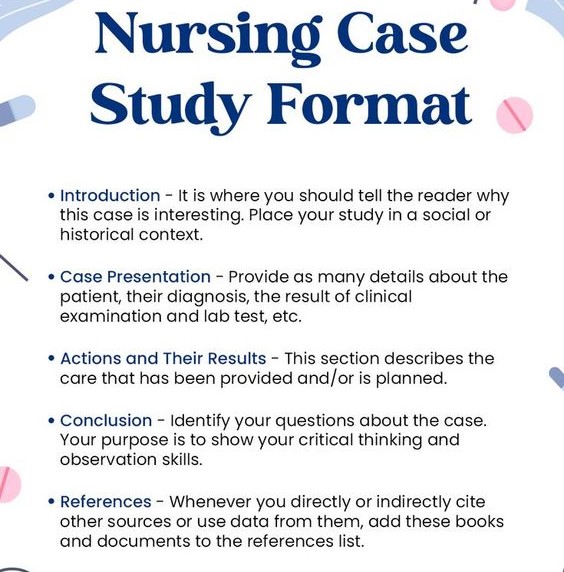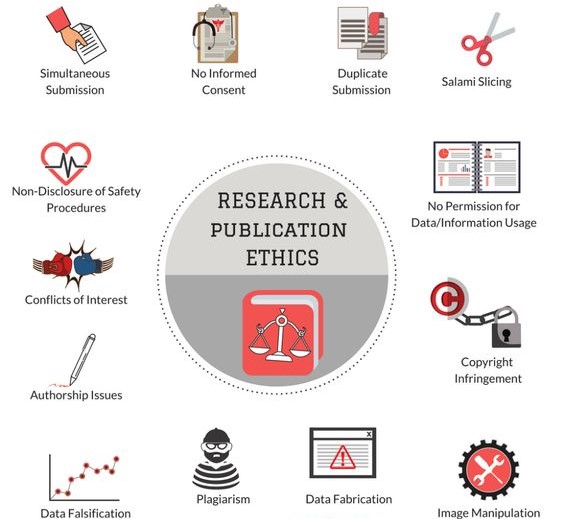
Table of Contents
The world of nursing is filled with fascinating stories of resilience, care, and the human spirit’s ability to overcome adversity. These stories, when documented effectively, can become powerful tools for education, research, and professional development. One of the most effective ways to capture these narratives is through the pediatric nursing case study.
A pediatric nursing case study is a detailed analysis of a specific patient experience, focusing on the nursing interventions, outcomes, and lessons learned. These studies are not just clinical records; they are compelling narratives that highlight the unique challenges and triumphs of caring for young patients. They offer a platform for reflection, discussion, and ultimately, better patient care.
What are the Core Elements of Pediatric Nursing?
A pediatric nursing case study is a detailed analysis of a specific patient situation within the context of pediatric nursing. It provides a comprehensive understanding of the patient’s health, developmental stage, and the nursing care provided. The core elements of a pediatric nursing case study include:
- Patient Demographics: This includes the patient’s age, gender, developmental stage, and any relevant family history.
- Presenting Problem: A clear description of the reason for the patient’s admission or visit, including the onset, duration, and severity of symptoms.
- Medical History: A detailed overview of the patient’s past medical history, including any previous illnesses, surgeries, or medications.
- Family History: Information about any significant medical conditions within the family, including genetic predispositions.
- Social History: This includes information about the patient’s home environment, family dynamics, school or daycare attendance, and any other relevant social factors.
- Physical Assessment: A comprehensive assessment of the patient’s physical status, including vital signs, growth parameters, and any specific findings related to the presenting problem.
- Diagnostic Tests: A summary of any laboratory tests, imaging studies, or other diagnostic procedures performed.
- Medication History: A list of all current and past medications, including dosages and administration routes.
- Nursing Interventions: A detailed description of the nursing care provided, including assessments, medications administered, treatments performed, and patient education.
- Outcomes: The results of the nursing interventions, including any improvement in the patient’s condition, complications encountered, or any changes in the care plan.
- Evaluation: An assessment of the effectiveness of the nursing interventions and any areas for improvement.

The purpose of a pediatric nursing case study is to provide a structured and comprehensive approach to understanding and addressing the unique needs of pediatric patients. By examining the case study in detail, nurses can gain valuable insights into the complexities of pediatric care and develop their clinical decision-making skills.
In addition to the core elements listed above, a pediatric nursing case study may also include:
- Ethical Considerations: This involves identifying any ethical dilemmas that may arise in the care of the patient.
- Cultural Considerations: This takes into account the patient’s cultural background and how it may influence their care.
- Family Involvement: This emphasizes the importance of involving families in the care of pediatric patients.
By analyzing and discussing these elements in a pediatric nursing case study, nurses can enhance their understanding of pediatric health, develop critical thinking skills, and improve the quality of care they provide to their young patients.
The Foundation of a Stellar Pediatric Nursing Case Study
A pediatric nursing case study that truly stands out is more than just a collection of facts; it’s a well-structured narrative that captivates the reader and leaves a lasting impression. Here’s a step-by-step guide to crafting a stellar pediatric nursing case study:
1. Selection and Approval:
- Choose a Relevant Case: Start by selecting a case that aligns with your learning objectives or research interests. It could be a complex case that presented unique challenges, a case showcasing innovative nursing interventions, or a case with exceptional outcomes.
- Obtain Consent: Always obtain informed consent from the patient or their legal guardian before proceeding. This is crucial for respecting patient privacy and maintaining ethical guidelines.
- Seek Institutional Review Board (IRB) Approval: For research-focused case studies, seek IRB approval before commencing data collection and analysis.
2. Data Collection and Organization:
- Gather Comprehensive Information: Collect detailed information about the patient, including their medical history, presenting symptoms, diagnostic findings, medications, and any relevant social determinants of health.
- Record Nursing Interventions: Document all nursing interventions, including assessments, medications administered, treatments provided, patient education, and communication with the healthcare team.
- Note Patient Outcomes: Observe and record the patient’s progress, including any changes in symptoms, vital signs, mood, and overall well-being.
- Document the Patient’s Perspective: Interview the patient (if age-appropriate) or their family to gather their insights and experiences. This adds a valuable human dimension to the pediatric nursing case study.
- Organize Your Data: Create a structured format for organizing your data, such as a timeline, flow chart, or table. This will help you analyze the information and present it clearly.
3. Writing the Pediatric Nursing Case Study:
Structure: A compelling pediatric nursing case study follows a clear structure:

- Introduction: This section should briefly introduce the case, highlighting the patient’s presenting problem, relevant medical history, and the main focus of the study.
- Patient Profile: Provide detailed information about the patient, including demographics, developmental stage, and family history.
- Clinical Presentation and Diagnosis: Present the patient’s symptoms, clinical findings, and the final diagnosis.
- Nursing Assessment: Detail your comprehensive assessment of the patient, including physical, psychological, and social factors.
- Nursing Interventions: Describe the specific nursing interventions you provided, including rationale, frequency, and modifications.
- Patient Outcomes: Discuss the patient’s response to the interventions, including both positive and negative outcomes.
- Analysis and Discussion: Analyze the case, connecting the nursing interventions to the patient’s outcomes. Discuss any challenges encountered, unexpected findings, or lessons learned.
- Conclusion: Summarize the key findings, emphasizing the clinical significance of the pediatric nursing case study. Consider future implications and recommendations for practice.
- Narrative Style: While adhering to a structured format, use a clear and concise narrative style. Engage the reader by presenting the information in a compelling and understandable manner. Use specific examples and anecdotes to illustrate your points and bring the patient’s story to life.
- Ethical Considerations: Maintain patient confidentiality throughout the writing process. Use pseudonyms or initials to protect the patient’s identity. Always adhere to ethical guidelines for patient privacy and data security.
- Conclusion: Summarize the key findings, emphasizing the clinical significance of the pediatric nursing case study. Consider future implications and recommendations for practice.
4. Enhancing Your Pediatric Nursing Case Study:
- Visual Aids: Use tables, charts, graphs, and images to enhance readability and understanding.
- Quotes: Include direct quotes from the patient or their family to provide a personal perspective.
- Reflection: Incorporate your reflections on the experience, including your learning points and how this pediatric nursing case study has shaped your practice.
- Evidence-Based Practice: Integrate evidence-based literature to support your nursing interventions and analysis.
- Relevance to Pediatric Nursing: Highlight the relevance of the case study to the broader field of pediatric nursing, connecting it to existing research, guidelines, and best practices.
Examples of Effective Pediatric Nursing Case Studies
- “Managing Pain in a Child with Cystic Fibrosis”: This case study could focus on a child with cystic fibrosis who experiences chronic pain. The study would explore the nurse’s role in assessing pain, implementing pain management strategies, and advocating for the child’s needs.
- “Promoting Family-Centered Care for a Child with Autism Spectrum Disorder”: This case study could document the nurse’s efforts to empower the child’s family by providing education, support, and resources to help them cope with their child’s diagnosis.
- “Improving Communication with a Non-Verbal Child with Cerebral Palsy”: This case study could examine the challenges of communication with a non-verbal child and how the nurse used innovative strategies, such as augmentative communication devices, to establish effective communication.

Common Mistakes in Nursing Case Study Writing
While case studies can be powerful tools for learning and sharing knowledge, they can easily fall short if common mistakes are made. Here’s a breakdown of some of the most frequent pitfalls to avoid when writing a case study:
1. Lack of Clear Focus and Structure:
- No Central Question: A case study should revolve around a specific question or problem. Without a clear focus, the study becomes a jumble of information with no clear takeaway.
- Weak Organization: The information should be presented logically, following a clear structure. Use headings, subheadings, and bullet points to guide the reader through the narrative.
- Rambling Narrative: Avoid lengthy paragraphs and irrelevant details. Stick to the essential information that contributes to answering the central question.
2. Insufficient Detail and Depth:
- Superficial Analysis: Don’t just describe what happened; analyze the situation. Explain the reasoning behind the actions taken, the challenges faced, and the lessons learned.
- Missing Context: Provide enough background information to allow the reader to understand the situation and appreciate the significance of the case study.
- Limited Data: Gather comprehensive data to support your analysis. This may include patient records, medical history, nursing notes, assessments, interventions, and outcomes.
3. Poor Writing and Presentation:
- Unclear and Confusing Language: Use clear, concise, and professional language. Avoid jargon and technical terms that might confuse readers.
- Lack of Engagement: Make the case study interesting and relevant to the reader. Use a compelling narrative style and vivid language to bring the story to life.
- Visual Aids: Use tables, charts, graphs, and images to enhance readability and understanding.
- Lack of Proofreading: Carefully proofread your work for grammar, spelling, and punctuation errors. A polished and professional presentation is crucial.
4. Ethical Oversights:
- Breaching Confidentiality: Always maintain patient confidentiality and obtain informed consent from the patient or their legal guardian before proceeding.
- Misrepresenting Data: Don’t fabricate or manipulate data to fit a desired outcome. Be truthful and transparent in your presentation.
- Lack of Objectivity: Present the case study objectively, avoiding personal opinions or biases that might compromise the study’s credibility.

5. Ignoring the “So What” Factor:
- No Practical Implications: A case study should have practical implications for nursing practice. Explain how the learnings from the case can be applied to other similar situations.
- Weak Recommendations: Offer clear and actionable recommendations based on the findings of the study. These recommendations should be specific and feasible for implementation.
Examples of Common Mistakes in Pediatric Nursing Case Studies:
- “The Case of the Feverish Toddler”: This case study might focus solely on the symptoms and treatment of a toddler’s fever, without exploring the underlying cause, potential complications, or the nurse’s role in communicating with the parents.
- “A Day in the Life of a Pediatric Nurse”: This case study could be overly descriptive, lacking a central focus or analytical depth. It might just be a chronological account of the nurse’s activities without any reflection or learning points.
- “The Unresponsive Infant”: This case study might fail to adequately explain the nurse’s decision-making process, the rationale behind their interventions, and the impact of their actions on the infant’s outcome.
By avoiding these common mistakes, you can elevate your pediatric nursing case study from a simple documentation of events to a valuable learning tool that promotes professional development and better patient care.
Publishing Your Pediatric Nursing Case Study
- Peer-Reviewed Journals: Consider submitting your pediatric nursing case study to peer-reviewed journals. This will allow your work to be reviewed by experts in the field and contribute to the body of nursing knowledge.
- Professional Conferences: Present your case study at nursing conferences to share your insights with a wider audience.
- Online Platforms: Publish your case study on online platforms, such as nursing websites, to reach a broader audience.

Remember, crafting a stellar pediatric nursing case study is a rewarding experience that can enhance your knowledge, skills, and professional development. It’s an opportunity to tell a compelling story, share valuable lessons, and contribute to the advancement of pediatric nursing.
Get the Best Nursing Case Study Writing Help
At PhD Nurse Writer, we offer the best nursing case study writing help for undergraduate, Degree, Master’s and PhD. Our service covers topic suggestion, case study writing, proof reading and editing, and plagiarism check and removal. Besides case studies, we can also help you with writing original nursing research papers, essays and dissertations.





